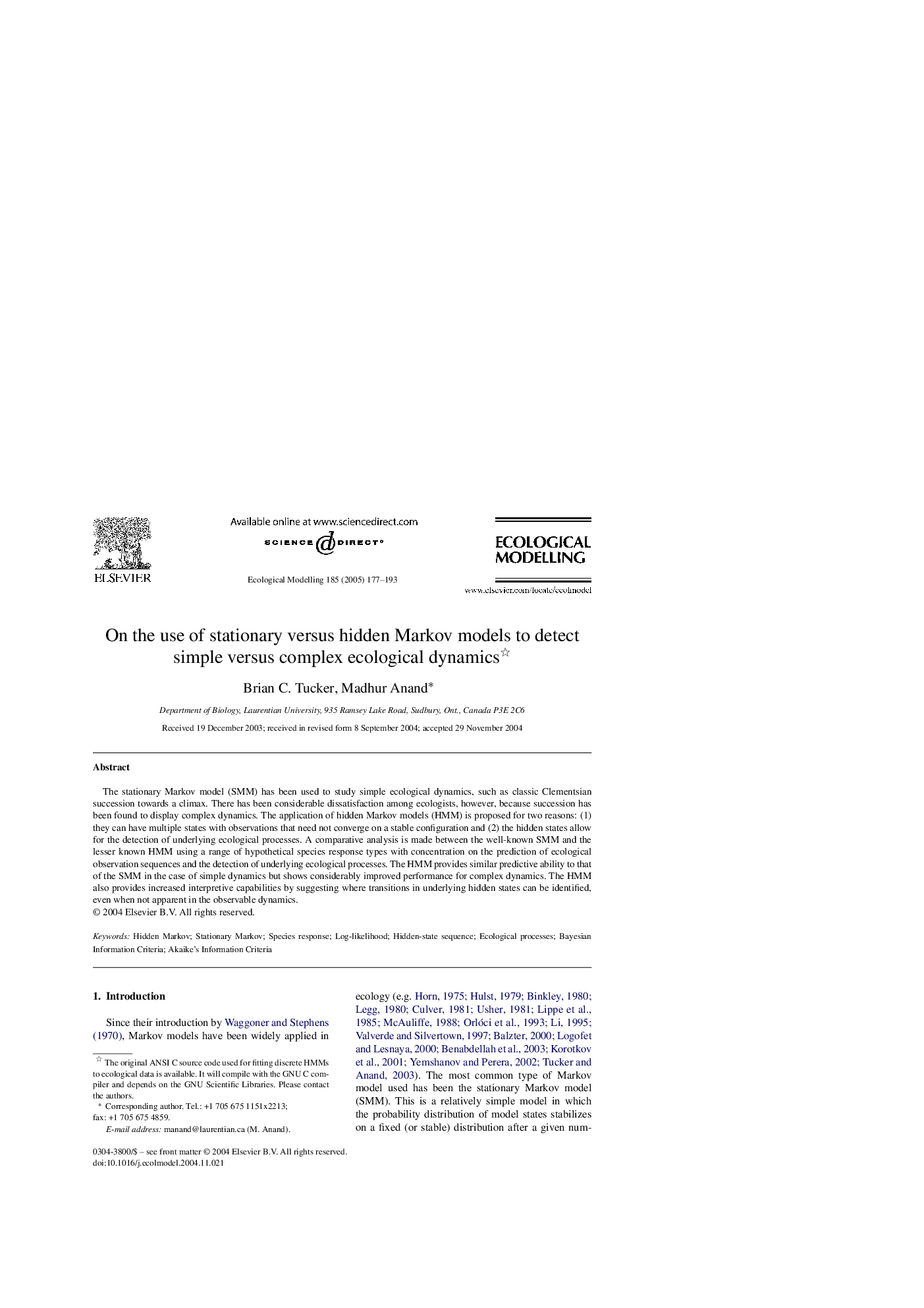| Article ID | Journal | Published Year | Pages | File Type |
|---|---|---|---|---|
| 9443383 | Ecological Modelling | 2005 | 17 Pages |
Abstract
The stationary Markov model (SMM) has been used to study simple ecological dynamics, such as classic Clementsian succession towards a climax. There has been considerable dissatisfaction among ecologists, however, because succession has been found to display complex dynamics. The application of hidden Markov models (HMM) is proposed for two reasons: (1) they can have multiple states with observations that need not converge on a stable configuration and (2) the hidden states allow for the detection of underlying ecological processes. A comparative analysis is made between the well-known SMM and the lesser known HMM using a range of hypothetical species response types with concentration on the prediction of ecological observation sequences and the detection of underlying ecological processes. The HMM provides similar predictive ability to that of the SMM in the case of simple dynamics but shows considerably improved performance for complex dynamics. The HMM also provides increased interpretive capabilities by suggesting where transitions in underlying hidden states can be identified, even when not apparent in the observable dynamics.
Keywords
Related Topics
Life Sciences
Agricultural and Biological Sciences
Ecology, Evolution, Behavior and Systematics
Authors
Brian C. Tucker, Madhur Anand,
